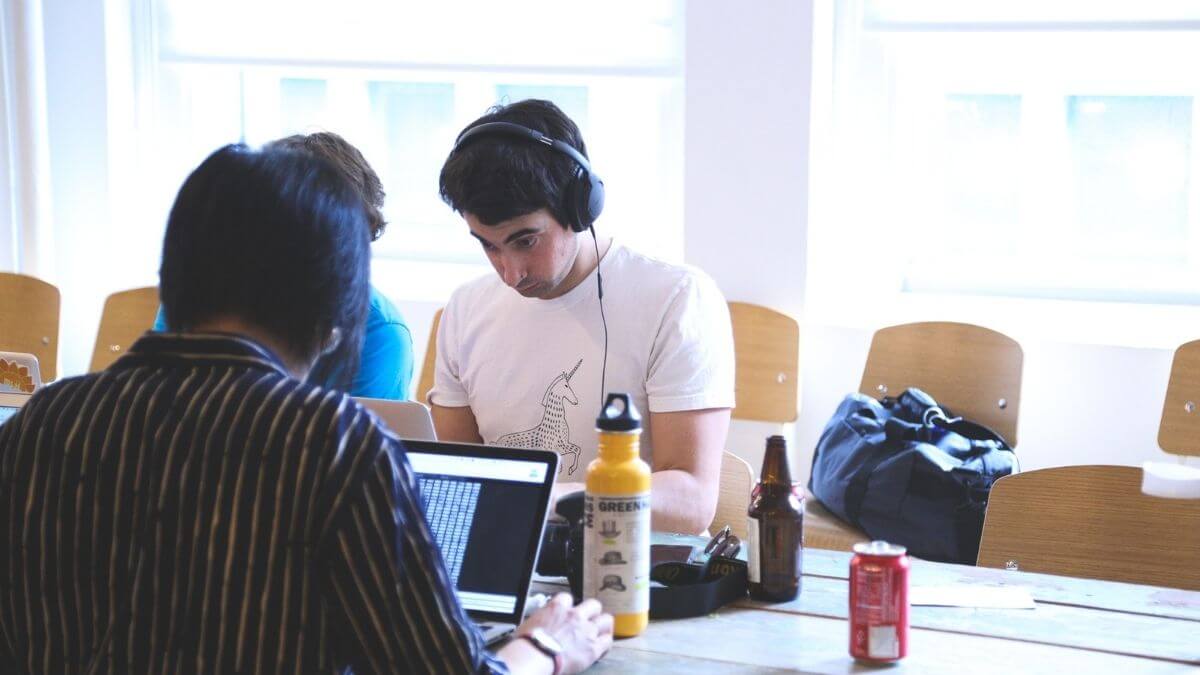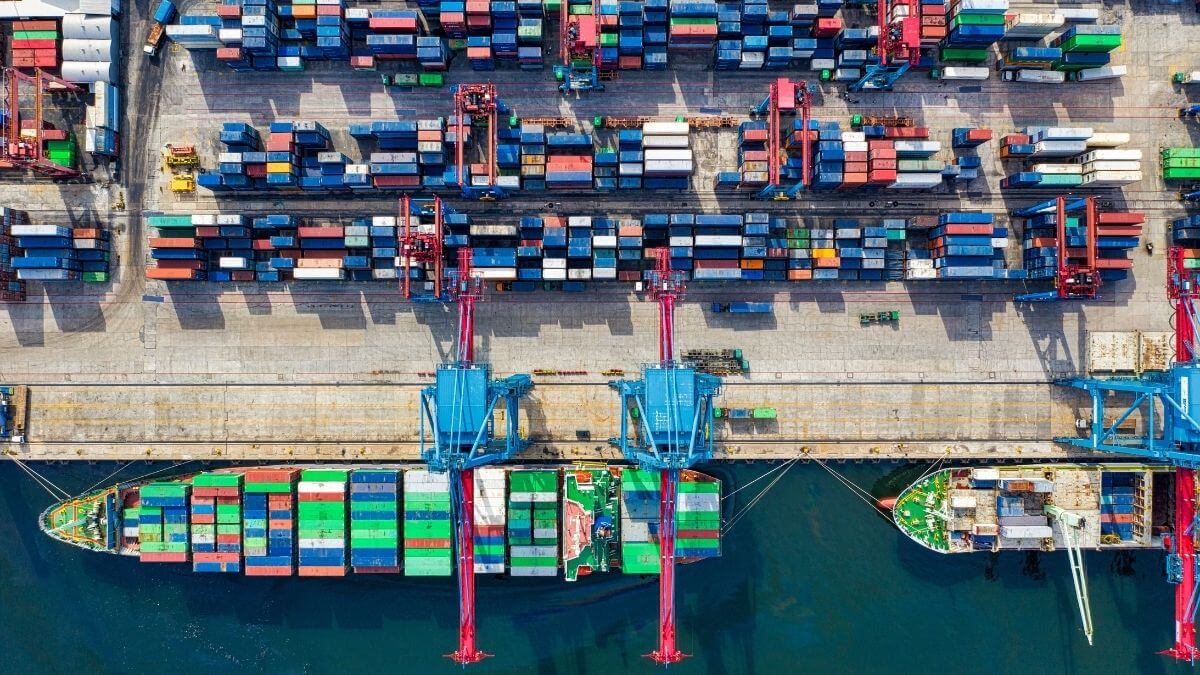Reshaping The Future of Logistics Through Technology: Sandeep Goel

Reshaping The Future of Logistics Through Technology: Sandeep Goel
Sandeep Goel, SVP- Tech, Moglix Business discusses how diverse stakeholders in the logistics ecosystem are facing the challenge of staying connected to the real economy while working remotely. While traditional metrics of cost, quality, and turnaround time continue to be in focus, supply chain security has emerged as one of the key concerns.
Four months into the COVID19 pandemic, the new contours defining the technology enablement of logistics are beginning to emerge. Enterprises are reimagining the future of logistics and zeroing down the gaps in their supply chain by pooling resources and people in their logistics networks, here is where technology will play a role in reshaping the future of logistics by enabling the integration of the core sectors in the real economy with digital platforms.
Read MoreStart-ups play a huge role in boosting economic growth

Start-ups play a huge role in boosting economic growth
What role do start-ups play in boosting economic growth? The start-up India campaign has enabled the creation of a holistic ecosystem like large manufacturing enterprises, on the same platform, empower each of these stakeholder groups especially start-up units with the necessary resources and explore new opportunities in partner for business development.
In fact, since the Start-up India initiative was launched in 2016, it has supported the creation of 5,60,000 jobs – both direct and indirect,” observes Rahul Garg, Founder & CEO, Moglix (a B2B industrial procurement platform where Rata Tata has also invested in his personal capacity).
Read MoreThe Evolving Role of HR in 2020

The Evolving Role of HR in 2020
In the wake of the pandemic, the human resources function has faced numerous challenges in keeping the workforce up and running as an economic and social organization. In the last few months, the HR team in organizations have had to create the messaging to ensure social distancing and the need to stay protected within the four walls of our homes. These challenges have exposed the limitations of the brick and mortar workplace and an offline workflow that many of us have continued to carry as a piece of historical baggage. The pandemic has also put the spotlight squarely on the human resources function to reimagine how people collaborate and stay connected now and in the future.
In the ensuing phase of the COVID19 pandemic, human resources have transformed in the following ways:
Read MoreMoglix appoints Amandeep Singh Bhan as Senior VP

Moglix appoints Amandeep Singh Bhan as Senior VP
Moglix, B2B e-commerce, and supply chain company has recently announced Amandeep Singh Bhan as the Senior Vice President- Strategic Partnerships. As one of the key members of the management team, Amandeep will lead institutional sales, business development, and key account management across all verticals in the enterprise segment in India. and overseas.
With over 18 years of leadership experience and expertise in driving business development and enterprise sales, Amandeep brings proven capabilities to Moglix in forging strategic partnerships and leading high-impact engagements in multiple geographies across the globe. He is an alumnus of the Indian Institute of Management, Bangalore. Amandeep is an engineer having graduated from VJTI, Mumbai. During the span of his career, Amandeep has held leadership positions across industry-leading corporations including Ezetap and SAP India. During his stint with Ezetap, he was leading enterprise sales, bank alliances, and retail business. At SAP India, he held leadership positions in Database and Technology Solutions and Account Management.
Remote Working and Digital Preparedness in the Future

Remote Working and Digital Preparedness in the Future
During this pandemic, the need for social distancing has compelled many businesses to explore working from home that has enabled them to protect their employees, customers, and communities of people that are dependent on them. It is of utmost importance to assess our digital preparedness for the future of this new style of working.
Given the various changes noticed in productivity, inclusivity, efficiency, many businesses may choose to adopt to the ew model of remote working, what is it that can be done to smoothen the process and make it effective.
Read MoreStartups are enabling digital supply chain in the manufacturing sector

Startups are enabling digital supply chain in the manufacturing sector
Rahul Garg, CEO & Founder, Moglix Business, highlights how startups are innovating rigorously to build new-age tech-enabled solutions for a much more efficient approach towards recovery. The Covid-19 pandemic has caused collateral damage to all stakeholders in global manufacturing, a void has emerged and manufacturing enterprises are searching for new reliable partners to improve their supply chain in terms of supplier collaboration, transparency, scalability, and efficiency.
Read MoreA national supply chain network can boost domestic manufacturing

A national supply chain network can boost domestic manufacturing
Different parts of the economy have been impacted by the new normal imposed by the Covid19 pandemic. It will be interesting to observe how the cultural distancing factors will affect industries and supply chain that have a strong association with national identity such as media, food & beverages, automobiles, consumer durables, and heavy engineering equipment.
As we look to re-start businesses and begin the recovery, we have to preview the impact of COVID19 pandemic through a supply chain lens rather than a geographical lens. We need to look at exploring our Indian supply chain network to boost domestic manufacturing across industry verticals and assess export promotion by enterprises as a strategy for employment generation and investment.
Read MoreRedefining e-Commerce with Smart Packaging and Contactless Deliveries

Redefining e-Commerce with Smart Packaging and Contactless Deliveries
Shobhit Goel, VP- Packaging, Moglix Business discusses the new realities amidst the COVID-19 pandemic, there are three touch-points that have become critical to providing the right consumer experience: digital commerce platforms, the shipper, and e-commerce packaging.
There is a dire need for a transformation in the current packaging practices, driven towards sustainable and smart packaging. Given the new-age packaging solutions already in place, contactless delivery is one of the solutions that needs further improvisation and innovation.
Read MoreInside Moglix Business

Inside Moglix Business
Know all about the journey of Moglix and its businesses. Being Asia’s largest and
How will startups meet the needs of tomorrow`s customers?

How will startups meet the needs of tomorrow`s customers?
Partha Dash, SVP, Moglix talks about the need for startups to adopt a dual-lens of providing short-term operational solutions to problems facing their customers and a long-term strategic route for targeting customer growth opportunities. As we weather through COVID19, it becomes essential for startups to rethink their current digital offerings with a long term impact. Collaboration always adds value to the new product and brings along the changes needed but not noticed.
Startups have an opportunity to partner with their customers and create connected teams, value chains, and supply chains of the future and offer technology-driven solutions that augment trust-building, security, and transparency.
